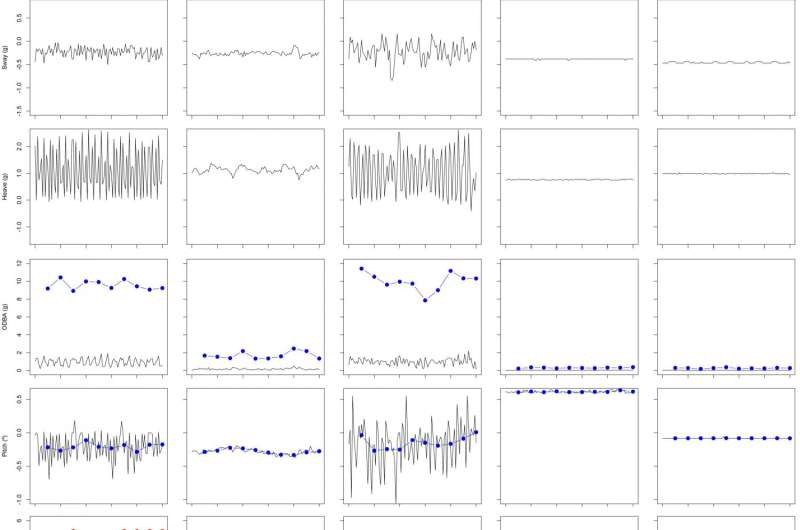Kestrels' strategies for flight and hunting vary with the weather

Kestrels adapt their flight and hunting strategies to weather conditions, including solar radiation, wind speed, and air temperature, according to a study published June 7, 2017 in the open-access journal PLOS ONE by Jesús Hernández-Pliego from Estación Biológica de Doñana, Spain, and colleagues.
Theory predicts that to maximize fitness, foraging animals should gain the most energy for the least cost of time and energy. Hernández-Pliego and colleagues tested this theory in kestrels, small insectivorous falcons that return to their nest to feed their chicks after a foraging trip. Kestrels have the options of commuting via time-saving flapping flights or energy-saving soaring-gliding flights, and of capturing prey via time-saving active hovering flights or energy-saving perch-hunting.
To explore whether the birds' behavioral decisions reflect trade-offs during the commuting and searching parts of foraging trips, the researchers tracked lesser kestrels with GPS and tri-axial accelerometers, which provide data on energy and time budgets in wild animals. The study included six kestrels (four males and two females) from two breeding colonies with in the Guadalquivir river basin of southwestern Spain.
The researchers found that kestrels' behavioral decisions varied with weather conditions. When solar radiation increased ? which strengthens thermal updrafts ? commuting birds replaced flapping with soaring-gliding. When wind speed increased ? which provides a stronger lift ? searching birds replaced perch-hunting with hovering. But kestrels also hovered more when air temperature increased possibly as warmer weather boosts the activity of large grasshoppers, the birds' preferred prey. While flight and hunting strategies varied dramatically with the weather, the researchers also found that the energy expended per foraging trip remained constant. This suggests that the birds have a fixed energy budget per foraging trip and adjust their behavior accordingly when environmental conditions vary.
"The lesser kestrel (Falco naumanni) adjusts its behavioral decisions about which flight (flapping versus soaring-gliding) and hunting strategies (hovering versus perching) to use during foraging trips in response to the environmental conditions," says Hernández-Pliego. "This changes throughout the day resulting in marked circadian patterns of foraging strategy in this raptor species."
More information: Hernández-Pliego J, Rodríguez C, Dell'Omo G, Bustamante J (2017) Combined use of tri-axial accelerometers and GPS reveals the flexible foraging strategy of a bird in relation to weather conditions. PLoS ONE 12(6): e0177892. doi.org/10.1371/journal.pone.0177892
Journal information: PLoS ONE
Provided by Public Library of Science




















